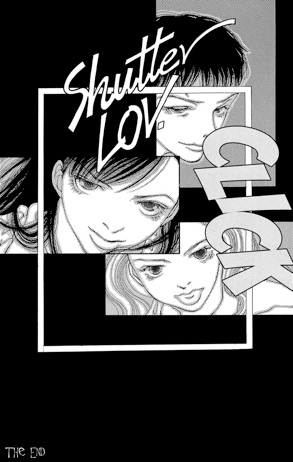Japanese Animation and New Media
Week Twelve: Chapter Twenty: The Spiral Dance of Symptom and Specter
Shutter Love thus begins with the premise of the camera as an apparatus with which men sexually objectify women. Yet, rather than simply having women assume the subject position vis-à-vis men and objectify male bodies, Shutter Love asks whether the camera can be used in non-objectifying ways.
The manga doesn’t make it easy for the young woman to move beyond the received ways of using the camera. It raises the dilemma to a new level: a famous male photographer sees the young woman’s photos and encourages her to submit some of her photographs to an exhibition. Thus begins an affair between the young woman and the male photographer, in which she is his protégée. In effect, her photos are still for his eyes. What is more, the male photographer’s girlfriend is also a photographer whose talent he has nurtured. And so a rivalry develops between the two women. They compete with each other by taking pictures of a third woman.
Ultimately, however, the women decide that they don’t need the male photographer, and the manga decides that it doesn’t need a fixed subjective position. In the final two pages, we have the male photographer asking himself how they did it, and we see frames of the three women. And he realizes that he needs to follow their example. The final page shows us three interlocking yet non-coincident snapshots of the three women. In sum, the technics of the photographic apparatus have broken with the fixed viewing position. And now snapshots look like the panels of manga. It seems the technics of manga has unraveled the received gender dynamics implicit of photographic technics. Interestingly enough, the result is something like the ‘woman who is not one.’ And insofar as the male photographer is now following their example, maybe everyone is indeed becoming a girl.




